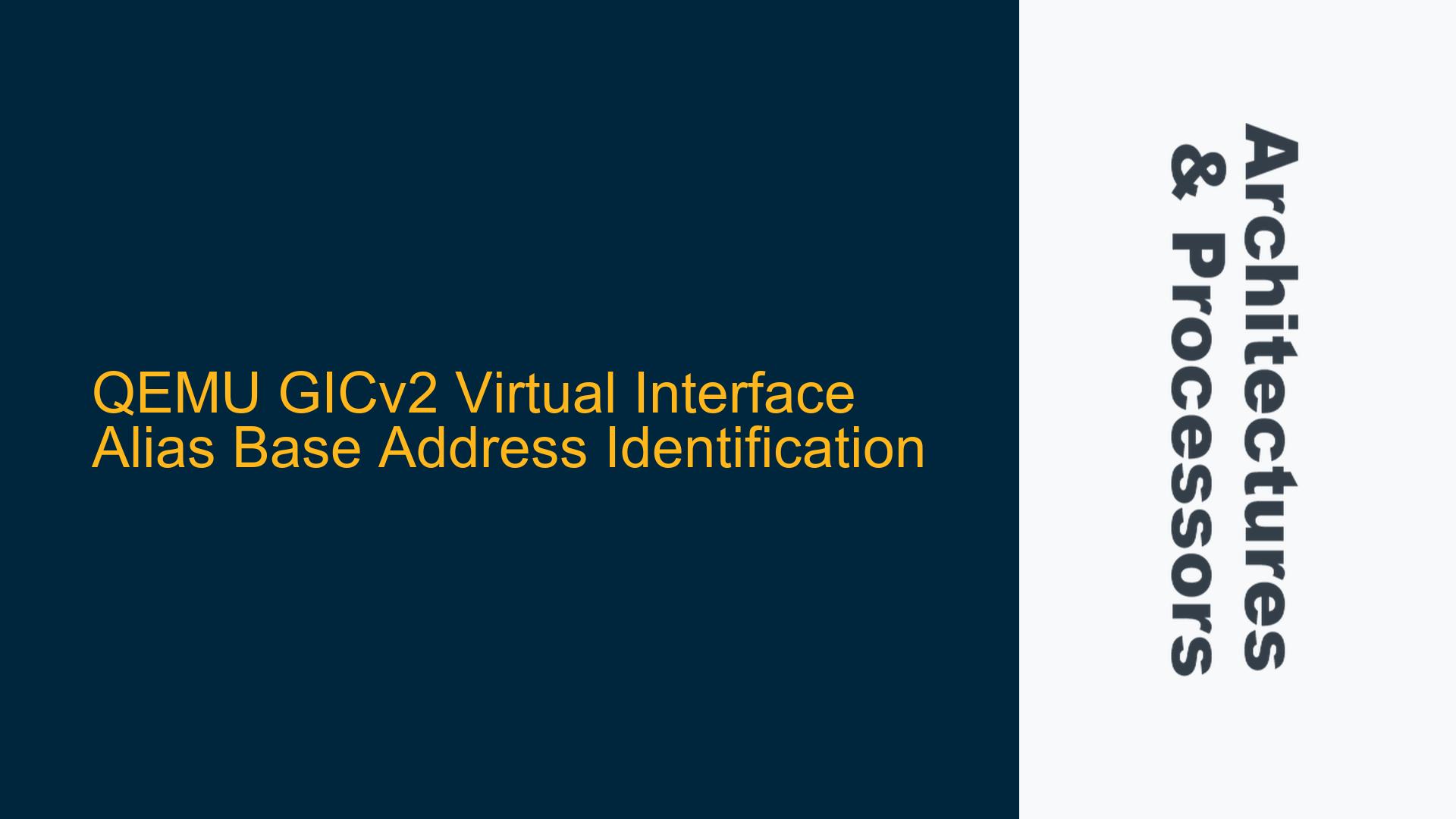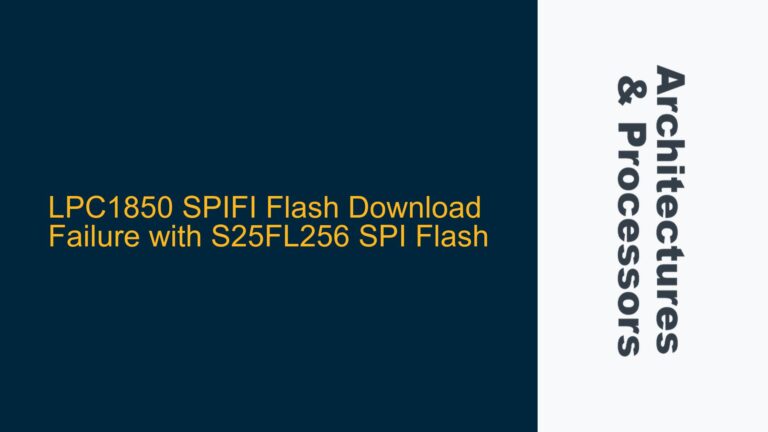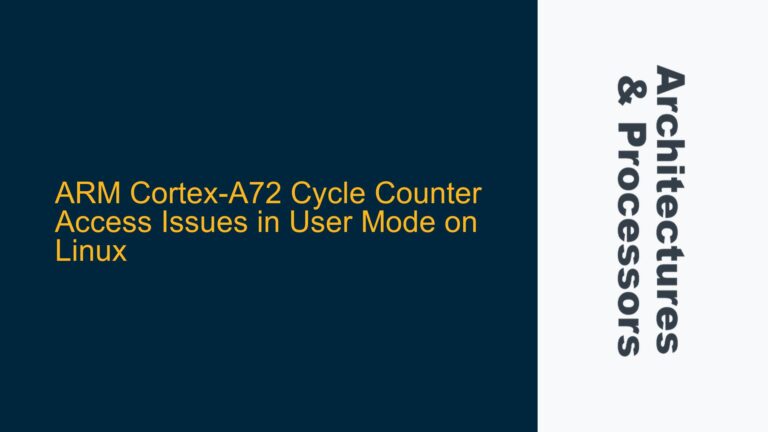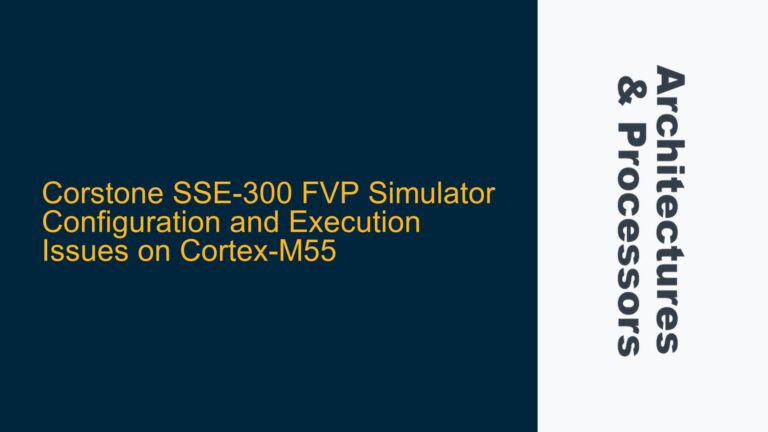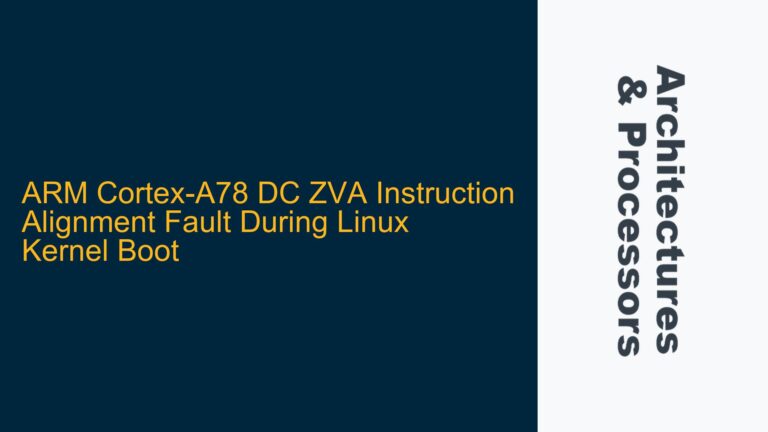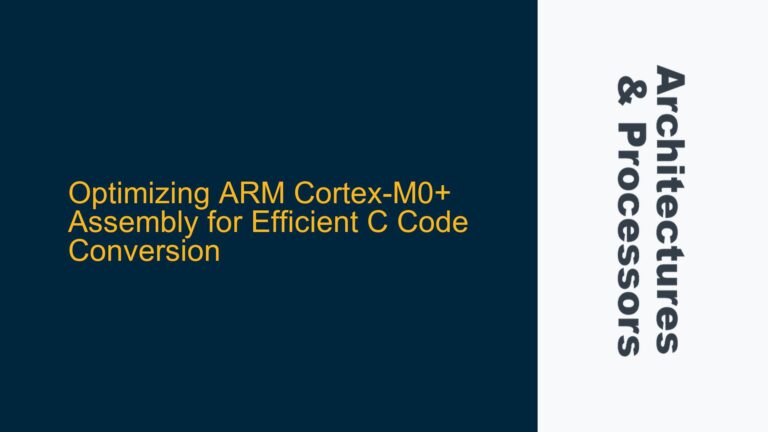GICv2 Virtual Interface Alias Memory Mapping in QEMU
The Generic Interrupt Controller version 2 (GICv2) specification mandates a global alias region that allows any virtual interface to be accessed by any CPU. This global alias region is crucial for hypervisor implementations, as it enables the management of virtual interrupts across multiple CPUs. In QEMU, the GICv2 implementation includes this functionality, but the base address of the global alias region is not explicitly documented. This can lead to confusion when attempting to access the virtual interface control registers or the virtual CPU interface registers.
The GICv2 architecture defines several memory-mapped regions, including the distributor, CPU interface, virtual interface control, and virtual CPU interface regions. The distributor and CPU interface regions are well-documented and typically mapped to known base addresses. However, the virtual interface control and virtual CPU interface regions, which are part of the global alias region, are less straightforward. These regions are essential for handling virtual interrupts in a hypervisor environment, and their correct mapping is critical for proper system operation.
In QEMU, the GICv2 implementation is based on the ARM Cortex-A15 GIC model, which includes support for virtualization extensions. The arm_gic_realize function in the QEMU source code indicates that the virtual interface regions are implemented, but the exact base addresses are not immediately apparent. This can be problematic for developers who need to access these regions directly, such as when implementing a hypervisor or debugging interrupt handling code.
Memory Map Discrepancies and Device Tree Analysis
One of the primary challenges in identifying the base address of the GICv2 virtual interface alias region in QEMU is the lack of explicit documentation. However, the base address can be inferred by analyzing the device tree blob (DTB) that QEMU generates for the virtual machine. The device tree is a data structure that describes the hardware components of a system, including memory-mapped registers. By dumping and decompiling the device tree, it is possible to locate the base addresses of the GICv2 regions.
The device tree typically includes a node for the interrupt controller, which contains the base addresses of the various GICv2 regions. For the ARM Cortex-A15 GIC model, the device tree node might look like this:
intc@8000000 {
...
reg = <0x00 0x8000000 0x00 0x10000
0x00 0x8010000 0x00 0x10000
0x00 0x8030000 0x00 0x10000
0x00 0x8040000 0x00 0x10000>;
compatible = "arm,cortex-a15-gic";
...
};
In this example, the reg property specifies the base addresses and sizes of the GICv2 regions. The first region (0x8000000) corresponds to the distributor, the second region (0x8010000) corresponds to the CPU interface, the third region (0x8030000) corresponds to the virtual interface control, and the fourth region (0x8040000) corresponds to the virtual CPU interface. These addresses are consistent with the GICv2 specification and the QEMU implementation.
However, the device tree does not explicitly label these regions, which can lead to confusion. The virtual interface control and virtual CPU interface regions are part of the global alias region, and their base addresses must be correctly identified to ensure proper access. Misidentifying these addresses can result in incorrect interrupt handling or system crashes.
Extracting and Interpreting the Device Tree Blob
To identify the base address of the GICv2 virtual interface alias region in QEMU, the device tree blob must be extracted and analyzed. This can be done using the following steps:
- Dump the Device Tree Blob: Use QEMU to generate the device tree blob for the virtual machine. This can be done by running QEMU with the
dumpdtboption, which writes the device tree blob to a file.
$ qemu-system-aarch64 -machine virt,gic-version=2,virtualization=on,dumpdtb=dump.dtb
- Decompile the Device Tree Blob: Use the device tree compiler (dtc) to decompile the device tree blob into a human-readable format. This will produce a device tree source (DTS) file that can be inspected for the GICv2 regions.
$ dtc -o dump.dts -O dts -I dtb dump.dtb
-
Locate the GICv2 Node: Open the decompiled device tree source file and locate the node corresponding to the GICv2 interrupt controller. This node will typically have a
compatibleproperty set to"arm,cortex-a15-gic"and will include aregproperty that specifies the base addresses and sizes of the GICv2 regions. -
Identify the Virtual Interface Regions: The
regproperty will list the base addresses of the GICv2 regions. The first two regions correspond to the distributor and CPU interface, while the third and fourth regions correspond to the virtual interface control and virtual CPU interface. These addresses can be used to access the virtual interface alias region in the hypervisor or other software.
For example, the following device tree snippet shows the GICv2 regions:
intc@8000000 {
...
reg = <0x00 0x8000000 0x00 0x10000
0x00 0x8010000 0x00 0x10000
0x00 0x8030000 0x00 0x10000
0x00 0x8040000 0x00 0x10000>;
compatible = "arm,cortex-a15-gic";
...
};
In this example, the base address of the virtual interface control region is 0x8030000, and the base address of the virtual CPU interface region is 0x8040000. These addresses can be used to access the virtual interface alias region in the hypervisor.
Implementing Access to the Virtual Interface Alias Region
Once the base addresses of the GICv2 virtual interface regions have been identified, they can be used to implement access to the virtual interface alias region in the hypervisor or other software. This involves mapping the memory regions and accessing the appropriate registers to manage virtual interrupts.
-
Memory Mapping: The virtual interface control and virtual CPU interface regions must be mapped into the hypervisor’s address space. This can be done using platform-specific memory mapping functions, such as
mmapon Linux. The base addresses obtained from the device tree should be used as the starting addresses for the memory mappings. -
Register Access: Once the memory regions are mapped, the hypervisor can access the virtual interface control and virtual CPU interface registers. These registers are used to configure and manage virtual interrupts, including enabling and disabling interrupts, setting priority levels, and acknowledging interrupts.
-
Interrupt Handling: The hypervisor must implement interrupt handling routines that interact with the virtual interface control and virtual CPU interface registers. This includes handling virtual interrupts, forwarding them to the appropriate virtual machines, and managing interrupt priorities.
-
Cache Coherency and Memory Barriers: When accessing the virtual interface control and virtual CPU interface registers, it is important to ensure cache coherency and use memory barriers as needed. This is particularly important in a multi-core system where multiple CPUs may be accessing the same registers concurrently.
For example, the following code snippet shows how to map and access the virtual interface control region in a hypervisor:
void* vgic_vctrl_base = mmap(NULL, 0x10000, PROT_READ | PROT_WRITE, MAP_SHARED, fd, 0x8030000);
if (vgic_vctrl_base == MAP_FAILED) {
perror("mmap");
exit(EXIT_FAILURE);
}
// Access the virtual interface control registers
uint32_t vctrl_value = *(volatile uint32_t*)(vgic_vctrl_base + VCTRL_OFFSET);
In this example, the virtual interface control region is mapped into the hypervisor’s address space, and the virtual interface control registers are accessed using pointer arithmetic. The VCTRL_OFFSET constant represents the offset of the specific register being accessed.
Conclusion
Identifying the base address of the GICv2 virtual interface alias region in QEMU requires careful analysis of the device tree blob. By dumping and decompiling the device tree, the base addresses of the virtual interface control and virtual CPU interface regions can be identified. These addresses are essential for implementing access to the virtual interface alias region in a hypervisor or other software. Proper memory mapping, register access, and interrupt handling are critical for managing virtual interrupts in a multi-core system. Additionally, cache coherency and memory barriers must be considered to ensure correct operation. By following these steps, developers can successfully implement and debug GICv2 virtual interface functionality in QEMU.
